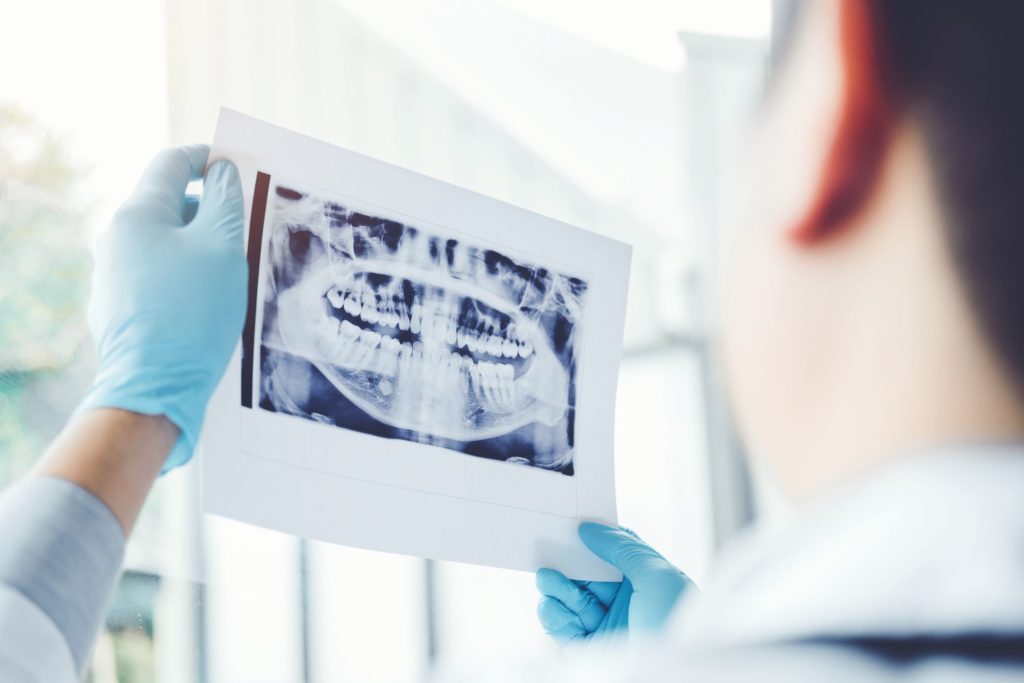When you visit your dentist for a routine check-up, you expect a teeth cleaning and a physical oral exam. But your dentist might also recommend getting an x-ray of your smile. Is this imaging really necessary to maintain good oral health?
The x-ray captures interior images of the teeth and jawbone, revealing details your dentist cannot spot by looking into your mouth alone. Dental x-rays are safe to perform and can help you better protect your dental health. Read on to learn three ways that x-ray imaging can help your dentist provide high-quality care for your smile.

3 Uses of Dental X-Rays
Find Hidden Tooth Decay
A cavity refers to a hole eroded into the surface of your tooth thanks to decay caused by bacteria. Your dentist can find many surface cavities during a visual inspection of your teeth. But cavities can also form between teeth or other areas difficult to see with the naked eye.
With x-ray imaging, a dentist can see a shadow on a tooth affected by decay. Then the dentist can intervene and treat the cavity to prevent any further damage to the tooth.
If left untreated, a cavity will worsen and penetrate deeper into the tooth, causing irreversible harm to your smile. Avoid this issue by seeking effective preventative care, including dental check-ups with x-rays.
Check Tooth Pulp Health
A dental x-ray shows clear internal pictures of the teeth and surrounding bone. It will also display signs of issues with the blood vessels in the pulp of the tooth. If blood vessels do not function properly, you might get a dead or non-vital tooth.
The dentist will need to keep an eye on this tooth because it will have a higher risk of infection. If this occurs, you might need root canal therapy. Your dentist can check for this problem and provide treatment where needed when they can see it clearly on a routine dental x-ray.
Monitor Tooth Growth
Your dentist can get a good image of your teeth as well as their position in your mouth both above and below the gumline in an x-ray. They can tell as they grow into place whether you will need orthodontic intervention to get a straighter smile.
They can also keep an eye on teeth yet to emerge through the gum line. Specifically, many dentists will use x-rays to monitor the growth of wisdom teeth. They can tell when they will begin to interfere with the other teeth in your smile and will need removal.
You might also need wisdom teeth extraction if they become impacted, meaning they cannot burst through the gumline and get stuck. This issue has a high chance of infection, so a dentist will want to remove these teeth before that happens.
They can schedule the extraction procedure before you experience these complications when they spot the issue on an x-ray. The average dental patient will get x-rays every two years or so.
